Table of Contents
2. How the Body Creates Proteins
3. What Triggers Protein Creation?
4. The Amino Acid Pool: Your Body’s Reservoir
5. Essential Amino Acids: The Critical Nine
6. Protein Quality: DIAAS & the “High-Quality” Obsession
7. Protein Requirements: Infancy to Old Age
8. Plant Power: Complete Protein Without Meat
9. The Myth of Unlimited Muscle Gain
10. Risks of Excess Meat & Protein Fads
11. The Plant-Based Edge: Performance & Longevity
🎥 Watch: Dr. Bomi Joseph explains how protein myths began — and what your body really needs for true Deep Health®.
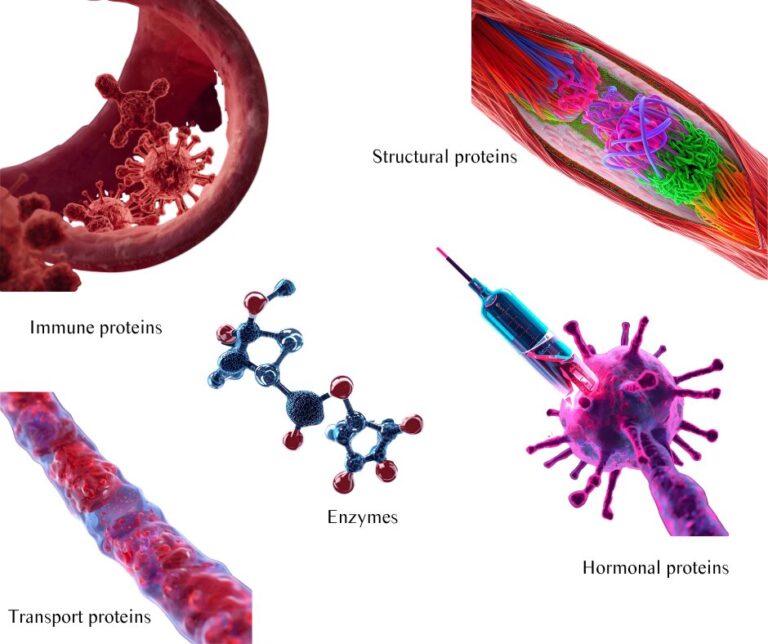
1. What Is a Protein?
Proteins are not just “nutrients.” They are living molecular machines — the workforce of life. Imagine billions of tiny robots inside you: building, repairing, signaling, defending. Over 100,000 types of proteins are hard at work in your body right now.
- Structural proteins – muscle fibers, skin collagen, keratin in hair and nails.
- Enzymes – catalysts of every chemical reaction, from digestion to DNA repair.
- Hormonal proteins – messengers like insulin that regulate metabolism.
- Immune proteins – antibodies hunting invaders.
- Transport proteins – hemoglobin, ferrying oxygen through your blood.
2. How the Body Creates Proteins
Your body manufactures proteins with breathtaking precision:
- DNA – the recipe book.
- mRNA – the copied recipe.
- Ribosomes – the chefs, assembling amino acids like a 3D printer.
- Proteins – the final dish, folded into an active molecular machine.
- A ribosome can assemble a protein in seconds.
- Thousands of different proteins are created every hour.
- Every protein’s unique shape determines its exact job.
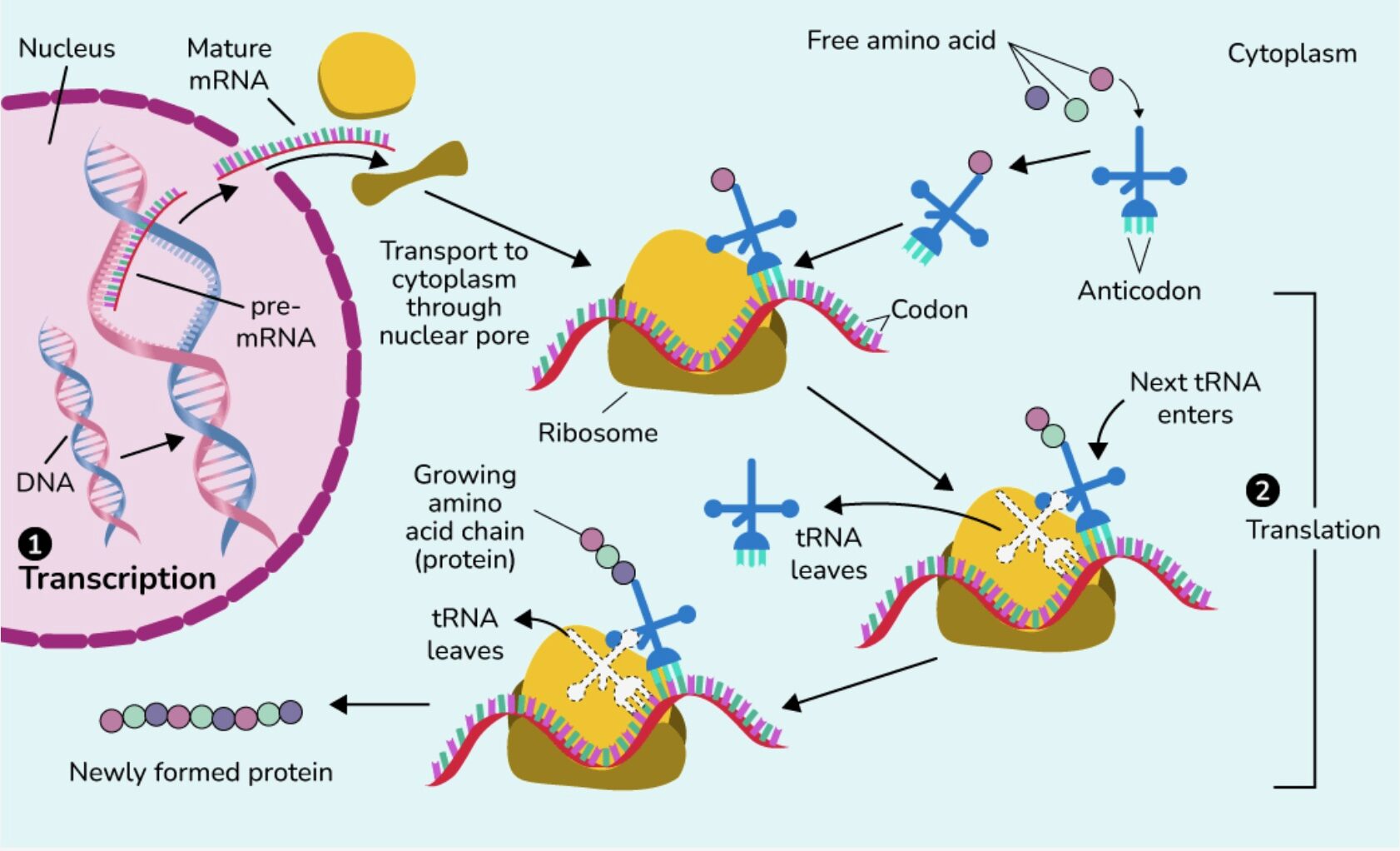
⚠️ Reality Check:
The body can build proteins in seconds, but it doesn’t build them just because raw material is available. Without the proper genetic “on-switches,” surplus amino acids are wasted or stored as fat.
3. What Triggers Protein Creation?
Protein synthesis is not random — it’s switched on by signals:
- Hormones: insulin after a meal, growth hormone during sleep.
- Immune challenges: antibodies during infection.
- Developmental cues: new proteins when cells specialize.
- Stress responses: heat shock proteins under extreme stress.
Proteins are created when the body needs them, not just because you ate a steak or slammed a protein shake.
⚠️ Reality Check:
Eating more protein does not mean you will automatically build more muscle. If your amino acid pool is full, the excess is excreted or converted into Acetyl-CoA, which is then used as fuel or stored as fat. Surplus protein becomes expensive body fat.
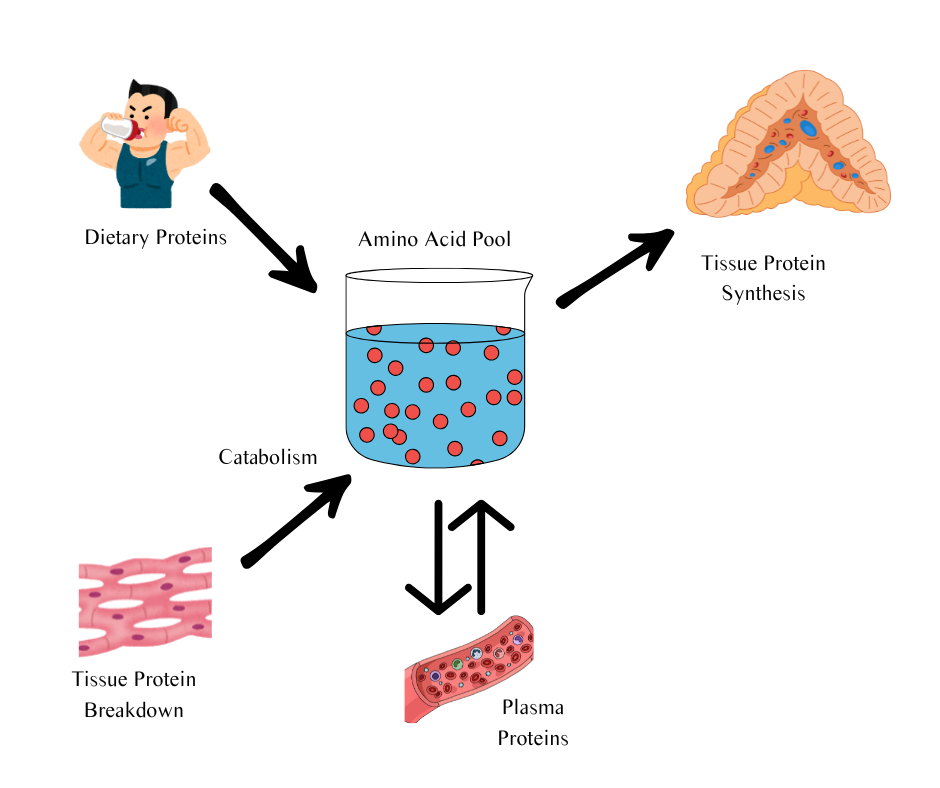
4. The Amino Acid Pool: Your Body’s Reservoir
- Amino acid pool lasts ~2 weeks.
- Body constantly recycles and balances amino acids.
- Provides flexibility — you can miss a meal and still repair tissue.
- Immediate shakes and powders are marketing hype.
⚠️ Reality Check:
You don’t need to panic about “missing the anabolic window.” The amino acid pool acts like a savings account. Miss a meal? Your body draws from the pool. Slam a 50g shake? The pool just overflows. Balance matters more than timing.
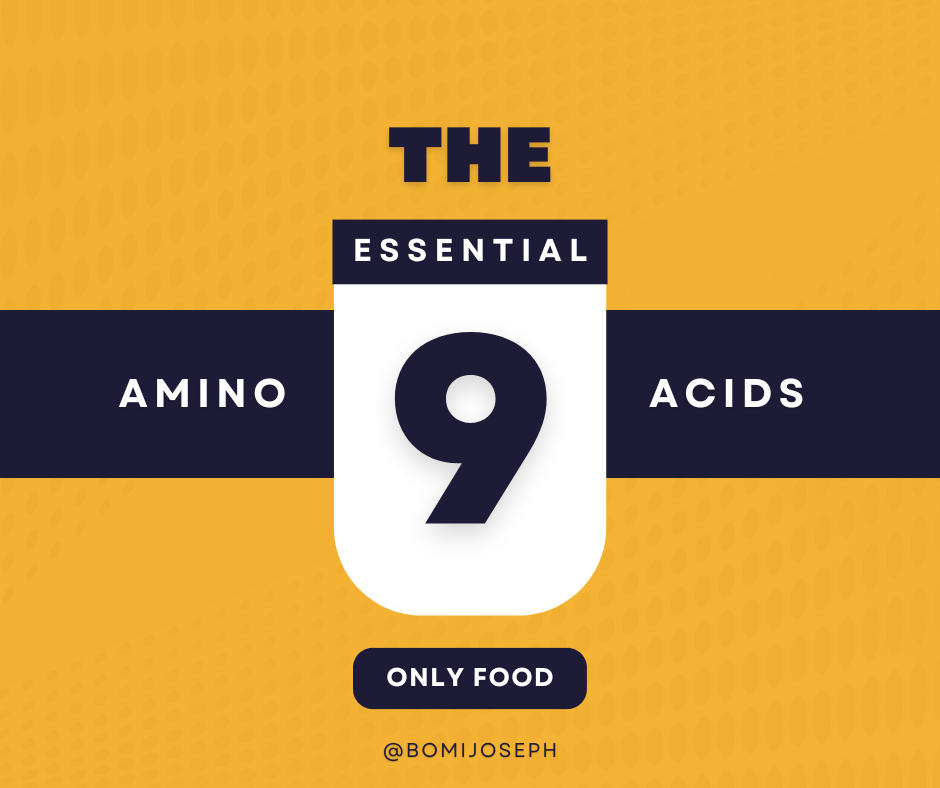
5. Essential Amino Acids: The Critical Nine
The body makes 12 amino acids, but the other nine must come from diet:
- Without them, growth and repair grind to a halt.
- They are the core link between food and survival.
- You don’t need meat — you just need food variety to provide these 9 “essential” amino acids.
Histidine
Helps your body make important molecules like histamine, which supports your immune system and digestion.
Leucine
A powerhouse for building and protecting muscle.
Isoleucine
Fuels your muscles with energy and helps repair them after exercise.
Lysine
Important for growth, tissue repair, and absorbing calcium.
Methionine
Helps your body process fats and protects your liver.
Phenylalanine
The starting point for brain chemicals that affect mood and alertness.
Threonine
Supports healthy skin, collagen, and a strong immune system.
Tryptophan
Known for helping make serotonin, which boosts mood and sleep.
Valine
Provides energy to muscles and helps them recover.
6. Protein Quality: DIAAS & the “High-Quality” Obsession
The FAO’s Digestible Indispensable Amino Acid Score (DIAAS) ranks proteins by their quality.
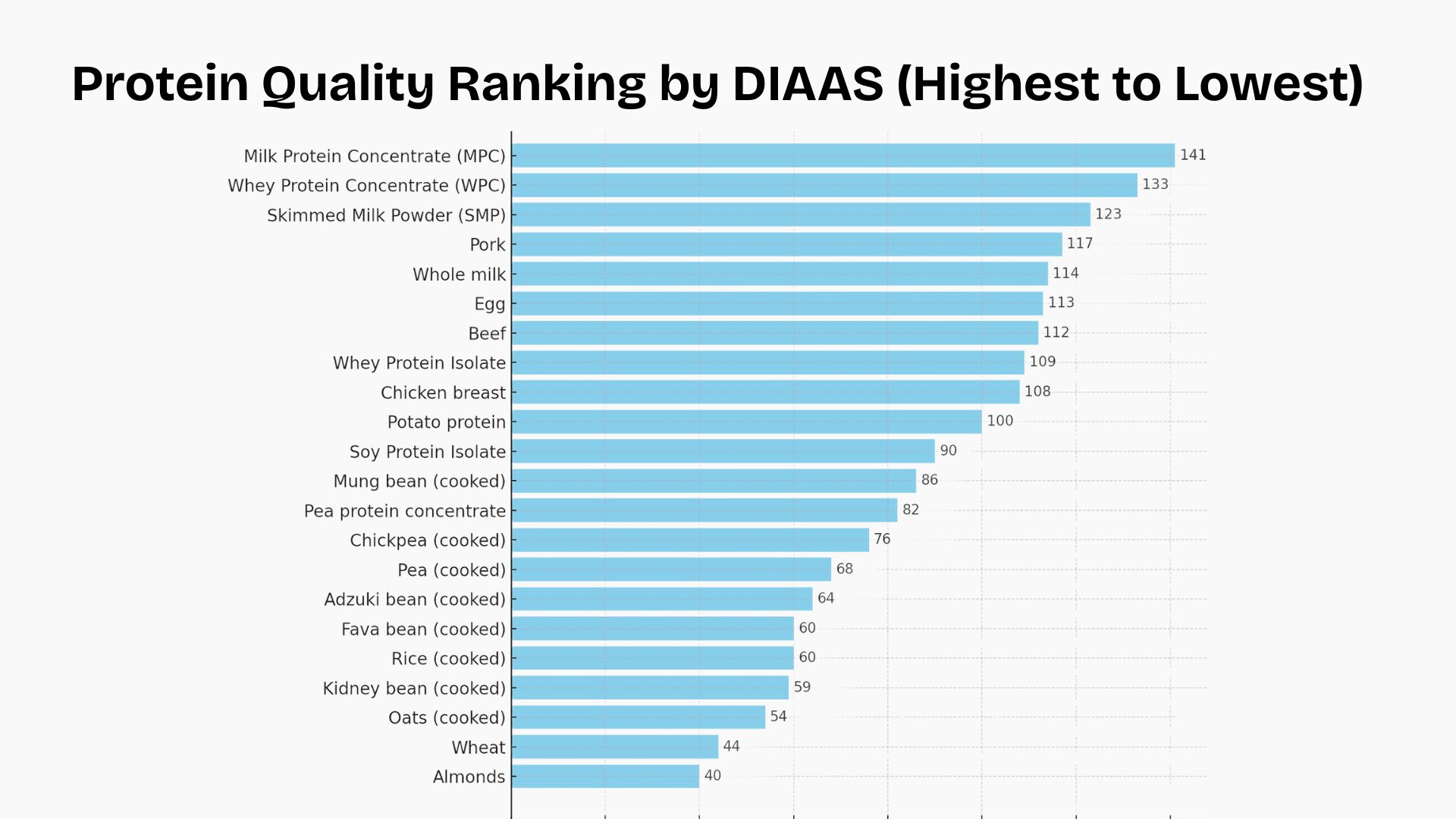
Casein, whey, and egg white concentrates score highest. But let’s compare DIAAS to nature:
- Blue whale: Mainly eat plankton, DIAAS ~40 → world’s largest mammal.
- Elephant: Roughage, DIAAS ~25 → world’s largest land mammal.
- Gorilla: Plant diet, DIAAS ~25 → closest primate relative of humans.
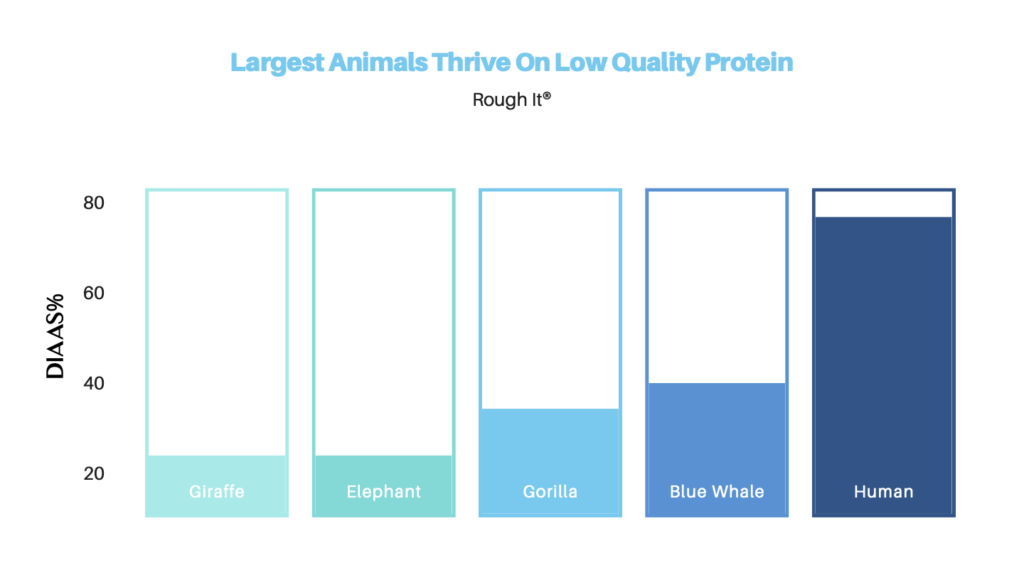
👉 This is my Rought It® claim:
Humans are designed to work hard extracting amino acids from rough, low-DIAAS foods. Hydrolyzed protein powders may help the sick and elderly, but for healthy adults they are a crutch that weakens your natural gut machinery.
⚠️ Reality Check:
“High-quality” protein is not a magic ticket to health. Hydrolyzed whey and isolates may digest fast, but they bypass the very work your gut is designed to do. Over-reliance can actually weaken your digestive system.
7. Protein Requirements: Infancy to Old Age
- Infants: The truth about protein is infants need 8 to 10 times more protein per kg body weight than adults. Human breast milk is the gold standard to provide this nutrition.
- Children: The truth about protein is children need less than infants but higher than adults, relative to their need for growth.
- Adults: The truth about protein is adults only need 0.66 g/kg/day — the lowest of all life stages.
- Elderly: The truth about protein is elderly need same as adults, though inefficiencies suggest that quality of the protein matters more.
- Pregnancy/Lactation: Needs more than adults for fetal growth and milk production.
👉 Core Insight: The obsession with adult protein intake is misplaced. Adults have stopped growing and need very little protein for maintenance. Evolution also made adults efficient — we need balance, not excess.
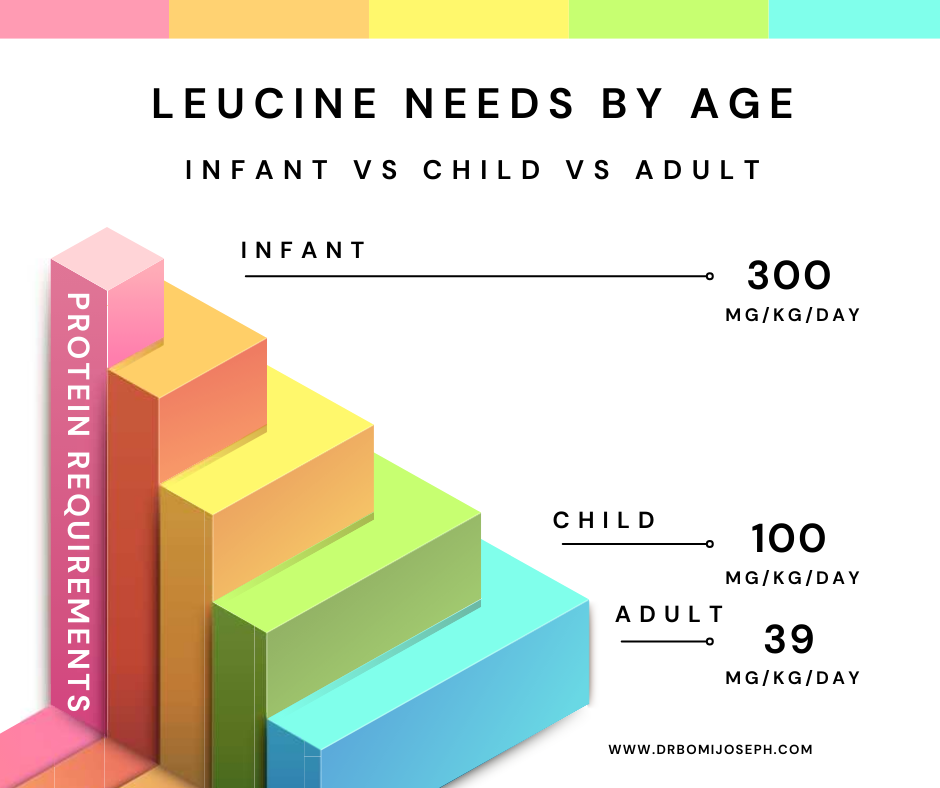
⚠️ Reality Check:
Adults are in the stage of life with the lowest protein requirement. The current protein mania is marketing, not biology. The focus of protein intake should be on infants and pregnant and nursing women.
8. Plant Power: Complete Protein Without Meat
Plant sourced protein don’t always have all 9 essential amino acids, but combinations do:
- Beans + Rice
- Hummus + Whole Wheat Pita
- Quinoa + Lentils
- Hemp + Chia + Seeds
- The amino acid pool means you don’t even need them in the same meal.
- Variety across days is enough.
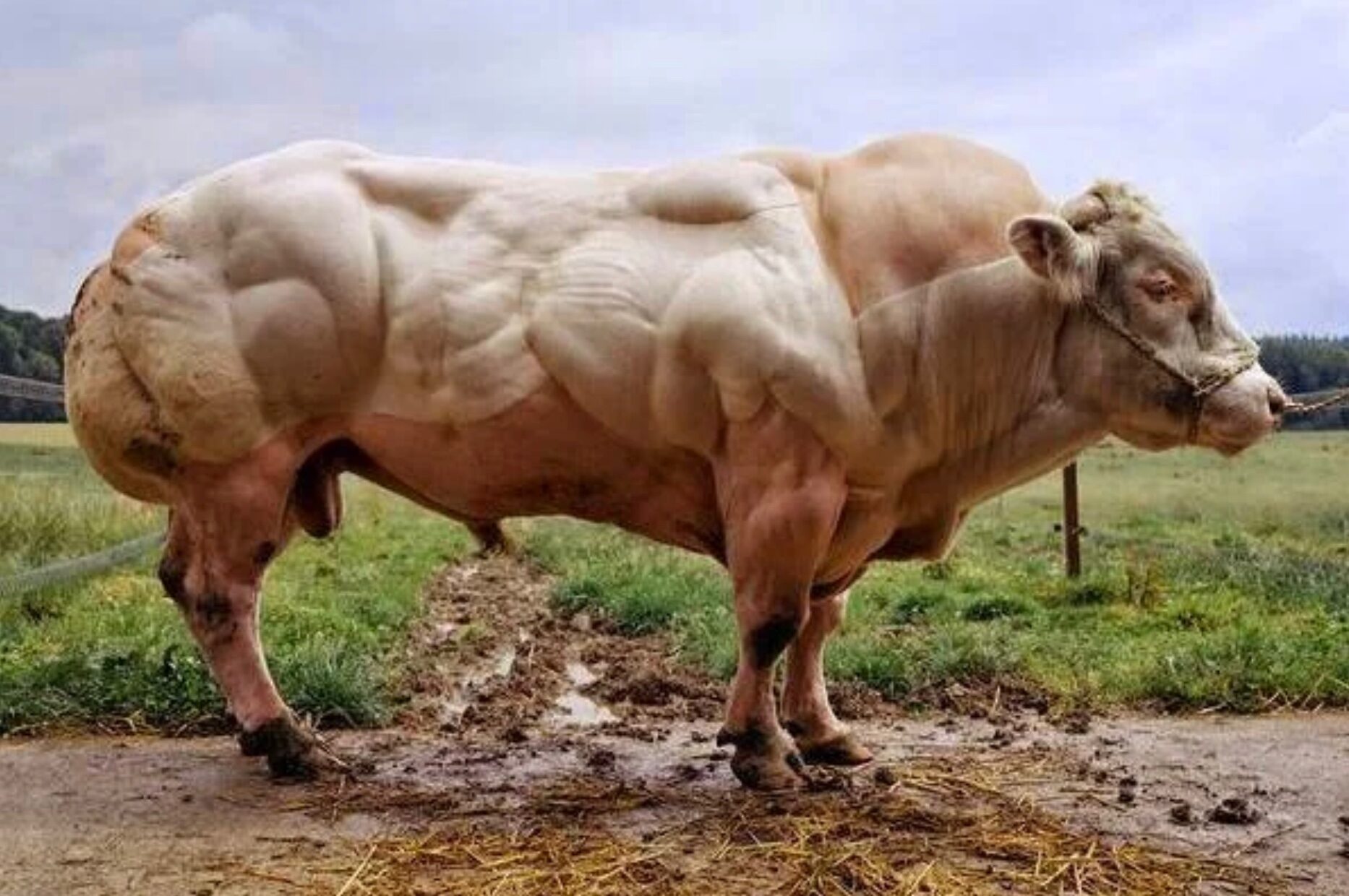
⚠️ Case Study: Belgian Blue Cattle
Myostatin is the gene that caps muscle growth. Mutation in the myostatin gene can remove that cap → “double muscling.” Looks impressive, but…
- Weak skeleton.
- Organ strain.
- High mortality.
Lesson: Bigger isn’t better if the system is broken.
9. The Myth of Unlimited Muscle Gain
- Men: ~20% above reference muscle.
- Women: ~18%.
- Realistic growth = 4–12 lbs of muscle per year at best. Then it slows to nothing as you near your genetic ceiling.
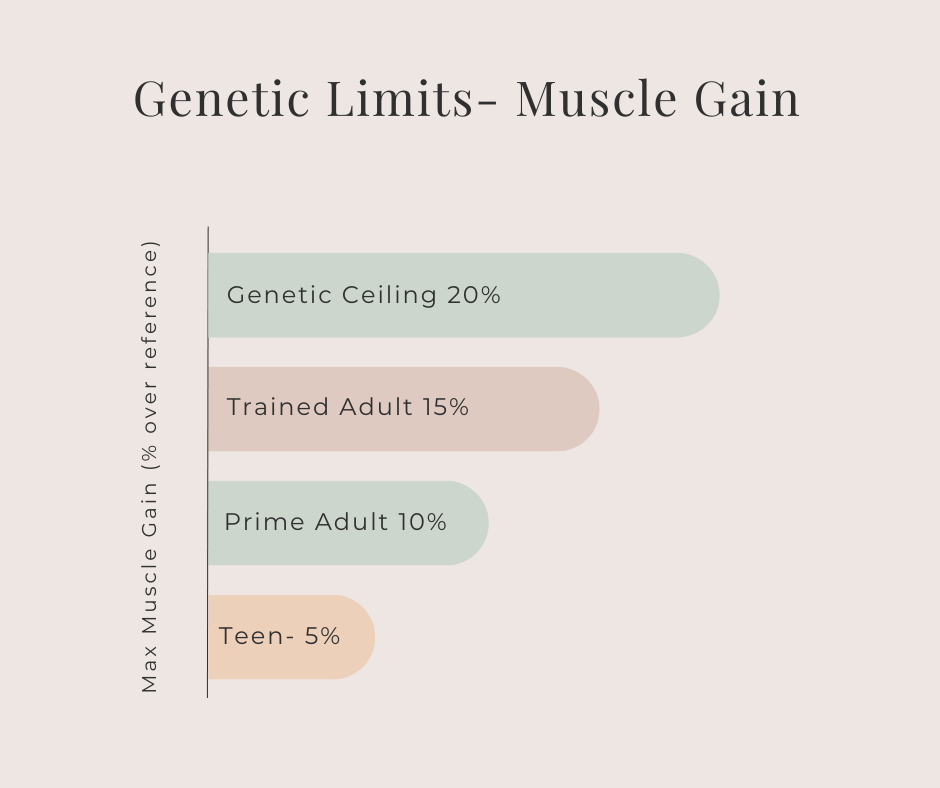
⚠️ Reality Check:
Muscle has a ceiling. Past a certain point, more protein, more supplements, or more steroids only feed your fat cells or wreck your organs. The truth about protein is you cannot cheat genetics without paying a price.
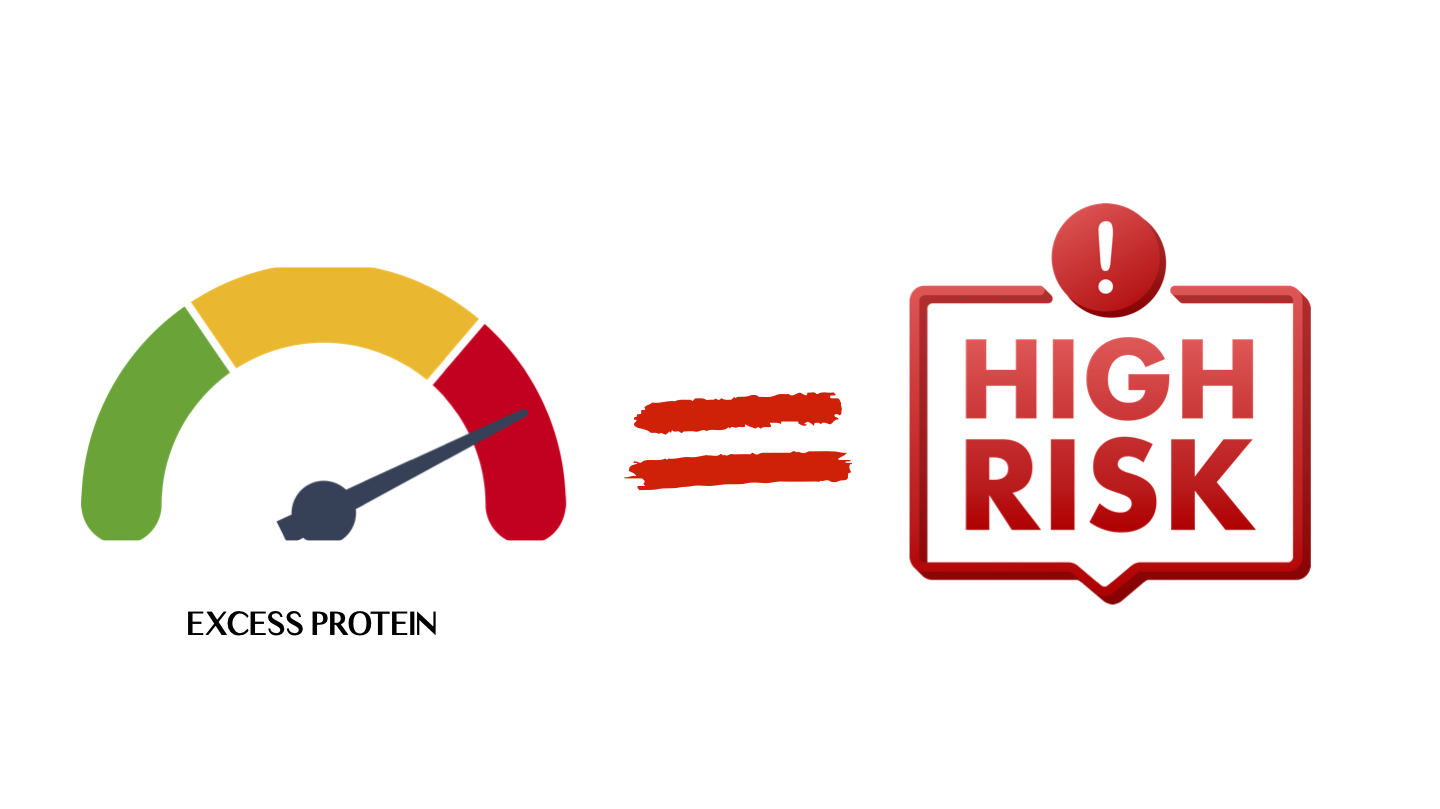
⚠️ Reality Check:
Many protein products have more in common with candy bars than with nutrition. Sugar, fillers, bulking agents, and artificial flavors dominate the label — and yet people trust them more than real food.
10. Risks of Excess Meat & Protein Fads
Too much protein, especially meat, comes at a cost:
- Heart disease, diabetes, cancer.
- Constipation and gut issues (due to low fiber).
- Kidney strain.
- Calorie overload → weight gain.
- Protein producs full of sugar, fillers, artificial junk.
Whole foods beat powders. Always.
11. The Plant-Based Edge:
Performance & Longevity
I tested it myself: I went 1 month eating only salads and cruciferous vegetables.
- Week 1: I felt hungry intermittently.
- Weeks 2–4: I was leaner, stronger, and faster.
I’ve also tracked 625 athletes on vegetarian diets. The common observation was:
- Higher energy.
- Faster recovery.
- Less fat, more performance.
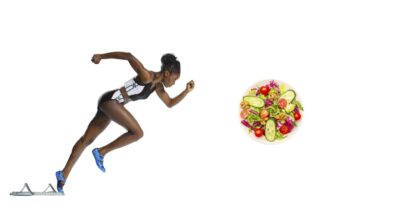
👉 Low-DIAAS proteins fuel champions when the body is allowed to adapt.
⚠️ Reality Check:
The truth about protein is low-DIAAS does not equal “low power.” The world’s largest mammals, and over 600 athletes I tracked, proved that low-quality protein diets can fuel strength, performance, and resilience — when the gut is allowed to do its work.
Conclusion:
Rought It®
and Protein Truth
- The truth about protein is infants need the most, adults the least.
- The truth about protein is nature’s giants thrive on low-quality protein.
- The truth about protein is your gut is built to work, not be coddled.
- The protein obsession is misplaced. Balance and diversity matter more.
Don’t fear low-quality protein. Embrace it. Rought It®.
References
- Protein and Amino Acid Requirements in Human Nutrition – WHO Technical Report Series 935.
- Evaluation of true ileal digestibility of amino acids and DIAAS of cooked pulses in growing pigs – Journal of Nutrition (2020).
- Values for DIAAS for some dairy and plant proteins vs. PDCAAS – British Journal of Nutrition (2017).
- Overview of protein quality based on DIAAS – Food Science & Nutrition (2020).
- The Protein Digestibility–Corrected Amino Acid Score (PDCAAS) – Journal of Nutrition (2000).
- Insect proteins as good-quality sources based on DIAAS – Animal Feed Science and Technology (2022).
- Dietary protein for athletes: From requirements to optimum adaptation – Journal of Sports Sciences (2011).
- Human Energy Requirements: Report of a Joint Expert Consultation – WHO/FAO/UNICEF.
- Myostatin, muscle mass, and response to resistance exercise – Exercise and Sport Sciences Reviews (2014).
- The myostatin gene and its role in muscle development: a review – Animal Research (2003).
- Diet, Nutrition, Physical Activity and Cancer: A Global Perspective – WCRF/AICR (2018).
- Protein: Moving closer to center stage – Harvard T.H. Chan School of Public Health.
Ask DrBomi® Health AI
Type any question and get a healthy response
